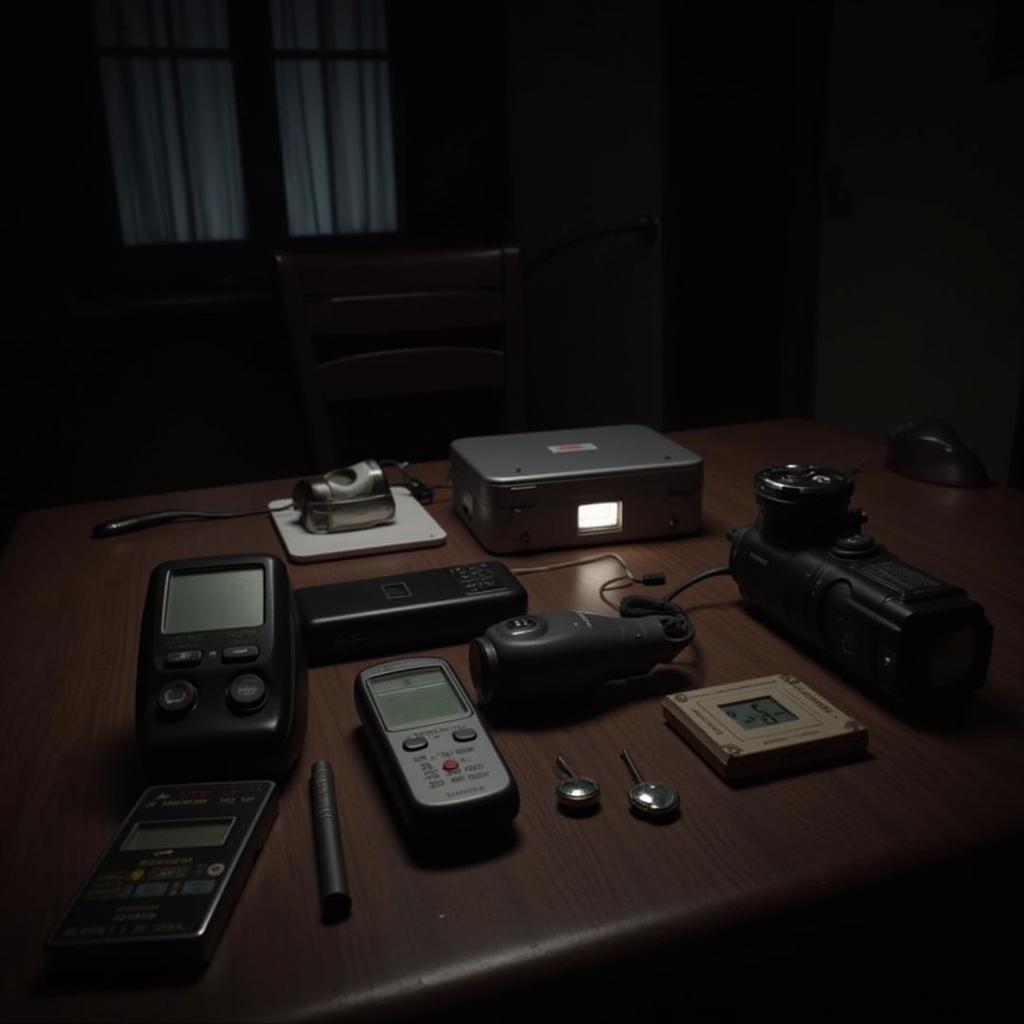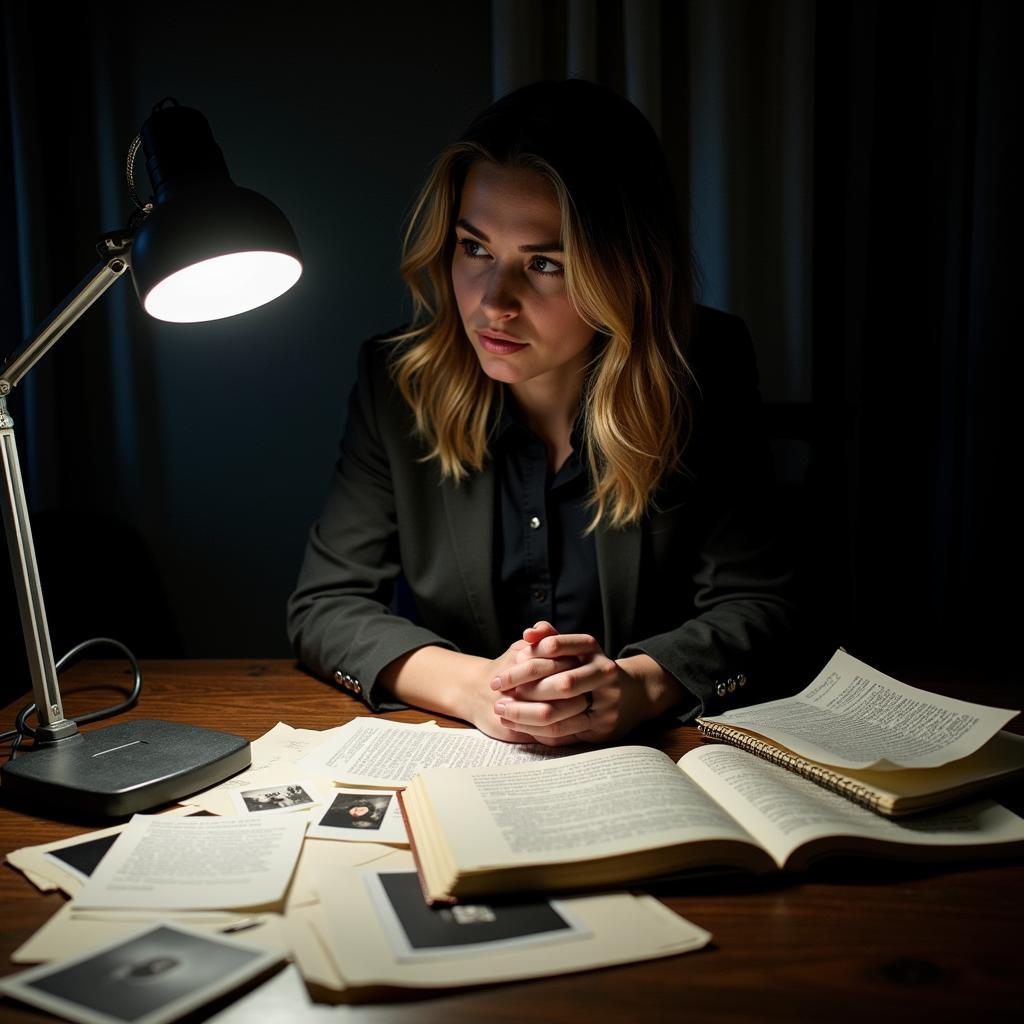Triangulated Research, a cornerstone of any credible paranormal investigation, is often misunderstood. It’s not about chasing ghosts with a ruler and protractor, but rather about applying a multi-faceted approach to gather evidence and draw informed conclusions. By combining various investigative methods, we strive to move beyond subjective experiences and gain a clearer picture of the phenomena at hand.
The Power of Three: Why Triangulate?
Imagine a single eyewitness claiming to have seen a UFO. Compelling? Perhaps. Now, imagine three unrelated individuals from different locations reporting the same UFO sighting, each corroborating specific details. The strength of the evidence multiplies exponentially. This, in essence, is the power of triangulation.
In paranormal research, where definitive proof can be elusive, triangulation acts as a filter against misinterpretations, hoaxes, and the fallibility of human perception. By cross-referencing data from different sources, we can:
- Validate Findings: If multiple lines of investigation point towards the same conclusion, it strengthens the validity of the findings.
- Reduce Bias: Each investigative method comes with its own set of limitations and potential biases. Triangulation helps mitigate these by providing a more comprehensive perspective.
- Enhance Credibility: Presenting a well-rounded body of evidence gathered through diverse methodologies lends greater credibility to the investigation.
The Pillars of Triangulated Research
While the specific methods employed may vary depending on the nature of the investigation, triangulated research in the paranormal field typically involves three key areas:
1. Witness Testimony: The Human Element
No paranormal investigation is complete without taking into account the experiences of those who claim to have encountered the unexplained. Gathering detailed accounts from witnesses involves:
- Conducting Interviews: Asking open-ended questions, allowing witnesses to share their experiences freely while documenting their emotional states and inconsistencies.
- Assessing Credibility: Carefully evaluating the witness’s background, mental state, and potential motivations for fabricating information.
- Corroborating Details: Searching for common threads and specific details across multiple witness accounts to identify patterns and potential truths.
2. Physical Evidence: Seeking the Tangible
While often scarce, physical evidence provides tangible support for paranormal claims. This can range from:
- Electromagnetic Field (EMF) Readings: Significant fluctuations in EMF levels can sometimes be associated with paranormal activity, although natural explanations should be ruled out first.
- Temperature Anomalies: Sudden drops or spikes in temperature can be indicative of unseen energy shifts, often reported in conjunction with other phenomena.
- Photography and Audio Recordings: Visual and auditory recordings, while not definitive proof on their own, may capture unexplained anomalies that corroborate witness testimonies.
 Essential Equipment for Paranormal Investigation
Essential Equipment for Paranormal Investigation
3. Environmental Factors: Unveiling the Context
Understanding the historical, environmental, and psychological context surrounding an alleged haunting is crucial. Key aspects include:
- Historical Research: Investigating historical records, local legends, and past traumatic events associated with the location to identify potential triggers or explanations.
- Environmental Assessment: Analyzing the physical environment for natural phenomena, infrasound, or other factors that could contribute to unusual experiences.
- Psychological Evaluation: Considering the psychological state of witnesses, potential for suggestibility, and the influence of cultural beliefs and expectations.
Connecting the Dots: Interpretation and Analysis
Gathering data is only half the battle. The true art of triangulated research lies in the meticulous analysis and interpretation of the findings.
- Identifying Patterns and Correlations: Examining the data for common threads, connections, and relationships between different types of evidence.
- Eliminating Alternative Explanations: Systematically ruling out logical and scientific explanations for the observed phenomena.
- Drawing Cautious Conclusions: Avoiding definitive pronouncements and acknowledging the limitations of Paranormal Research, even when strong evidence exists.
 Paranormal Researcher Analyzing Evidence
Paranormal Researcher Analyzing Evidence
Conclusion: Embracing the Unknown with Rigor
Triangulated research is not about proving or disproving the existence of ghosts, but rather about approaching the unknown with a critical, objective, and scientific mindset. By employing multiple lines of inquiry, we can shed light on the mysteries of the paranormal, one carefully investigated piece of evidence at a time.
Do you have a story to share? Contact us at 0904826292, email us at research@gmail.com, or visit our office at No. 31, Alley 142/7, P. Phú Viên, Bồ Đề, Long Biên, Hà Nội, Việt Nam. Our dedicated team is available 24/7 to assist you.